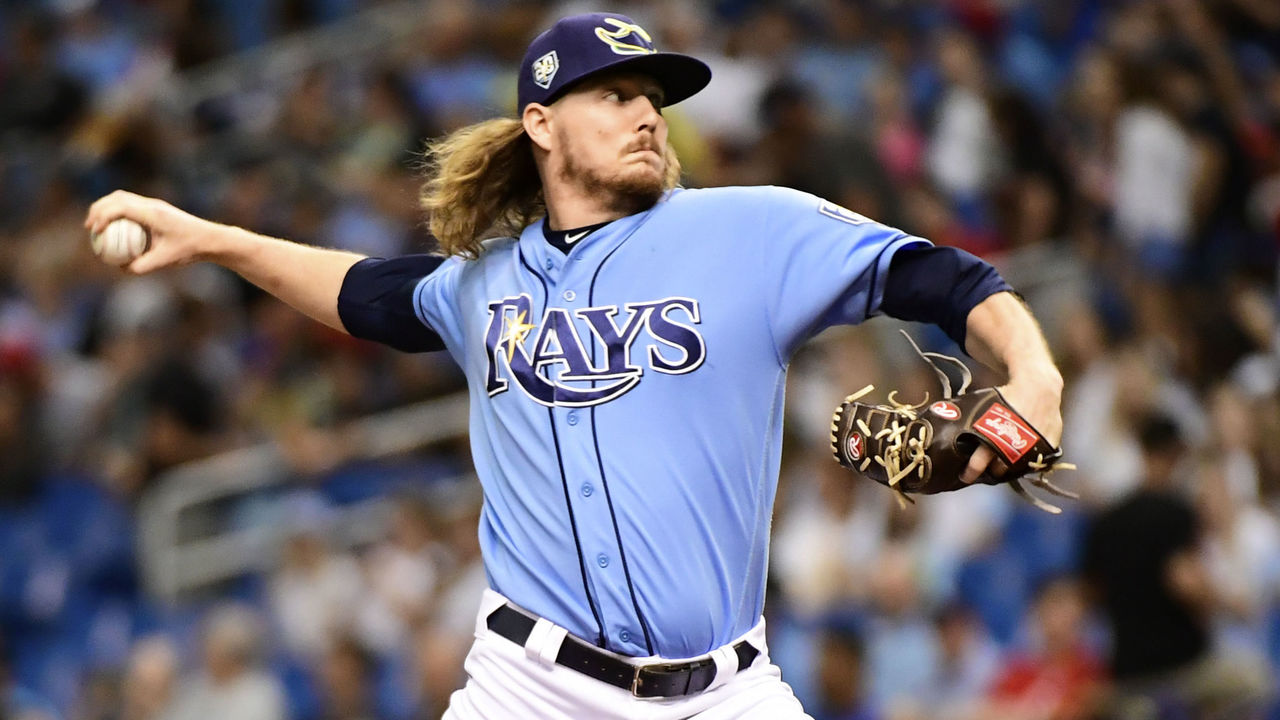Will Charlie Montoyo bring Rays' ways to Toronto?
TORONTO - Less than 24 hours after the Boston Red Sox turned the league's highest payroll into a World Series championship, the Toronto Blue Jays introduced a manager they'd just hired away from the team that spent the least money on player salaries.
But Charlie Montoyo's time with the Tampa Bay Rays ended with a 90-win season that no one saw coming. And in a year where the Rays were expected to circle the drain with the Baltimore Orioles at the bottom of the American League East, they shocked the league by becoming its most influential team.
Tampa Bay's ability to translate its analytics onto the field - introducing the "opener" into the MLB lexicon with stunning efficiency - represents a jarring shift in how the game is played. Montoyo now has another "rebuilding" team under his watch in the Blue Jays, but he doesn't envision taking the conventional route, with plenty of losing and pain along the way.
"I don't think that way. We're going to try to win from the beginning," Montoyo said Monday. "From the first game of spring training, we're going to try to win."
That may sound bland and predictable, but it's impossible to keep a straight face and say that all 30 MLB teams took the field each day in 2018 with legitimate World Series aspirations.
Were the Blue Jays putting themselves in the best position to win with Gio Urshela and Russell Martin starting games at shortstop? Were the 41 starts from Sam Gaviglio, Joe Biagini, and Jaime Garcia signs of a team scratching and clawing to gain every possible edge?
That's where Montoyo's influence - and "Rays Ball" - comes in.
Teams with $150-million-plus payrolls needn't worry about filling out a proper roster, but franchises looking to cut back or go full-on cheap can do so by following the Rays' blueprint. And, of course, a low-cost ballclub that can win a few games is an owner’s dream.

Last offseason, the Blue Jays gave $10 million guaranteed over one year to Garcia. The White Sox gave Miguel Gonzalez $4.75 million, the Rangers signed Doug Fister for $4 million, and the Orioles handed Chris Tillman a $3-million contract. All four deals yielded little or no value for those teams. Garcia, for his part, provided 0.0 WAR and was released in August.
Might it make sense, then, for a rebuilding club like the Blue Jays to go cheaper as a matter of strategy? Why not have Ryan Tepera or Tim Mayza pitch the first inning or two, depending on the platoon advantage of the other team's lineup, with a long man (or "bulk guy," as the Rays called it) to follow?
"That will still be a conversation with the front office and our coaches," Montoyo said, dodging most strategy-specific questions on Day 1. "Just because I come from Tampa Bay doesn't mean we're going to do everything they did over there. We're a different team and we're going to adjust to what we have."
Montoyo's willingness to be vulnerable and his receptiveness to new ideas is part of what drew Ross Atkins to his new skipper.
"Being in an environment that is innovative, that tries to do things differently and has success, is positive," the general manager said. "That creates a mindset that is open and that is extremely important to us."
The results of Tampa's opener strategy still represent a very small sample size, but early indications suggest they struck gold on a stainless-steel budget.
Using an opener is all about gaining an advantage in the first inning, which then sets up a long man to pitch the bulk of the game without seeing hitters for a third time. It works even better with a Blake Snell at the front of your rotation, too. Let’s call it the aces-and-openers approach.

The Rays' first-inning ERA of 3.61 was the best in the American League, over a full run lower than Toronto's 4.78 mark. They also held opposing hitters to the lowest first-inning average in the AL at .213. Tampa Bay got out to a 21-22 start but finished the year 69-50 after adopting the opener.
The strategy doesn't need to work for everybody, but when it's deployed by the right team, it seems to do the trick. Though Montoyo insisted he isn't tied to it, a lot of arrows are pointing in the same direction league-wide.
"I'm a blend of old school and analytics," Montoyo said. "Using both makes you a better manager. I wouldn't say I'm just one way or the other. Wherever I can find useful information, that's where I'm going to go."
So as Montoyo takes the Rays' ways to Toronto and Rocco Baldelli takes it to the Minnesota Twins, what's the downside?
Well, if you're a free-agent veteran starting pitcher hoping to shore up the back end of a team's rotation, this strategy is not your friend. Tampa Bay pieced together some low-cost relievers to create the mirage of an effective starter, and a couple of those relievers will fetch a better trade-deadline return than any starter with an ERA north of 4.50.
Arbitration still values counting stats, too, such as pitcher wins, innings pitched, or saves. Openers and bullpen games change the way those numbers are divided among pitching staffs, which could produce some unique arbitrations cases down the road.
Some analytics have benefited players by highlighting their value in areas that were previously harder to see or quantify, and analytics may adjust to this development too. For now, though, baseball's hottest trend can be a miracle pill: a way to win more games for less money.
Keegan Matheson is the editor-in-chief of Baseball Toronto, which he founded in early 2018 after previously covering the Blue Jays for MLB.com. He appears regularly across sports radio and television networks in Canada as a Blue Jays and MLB analyst. Now living in Toronto, Keegan is originally from Nova Scotia. Find him on Twitter @KeeganMatheson.